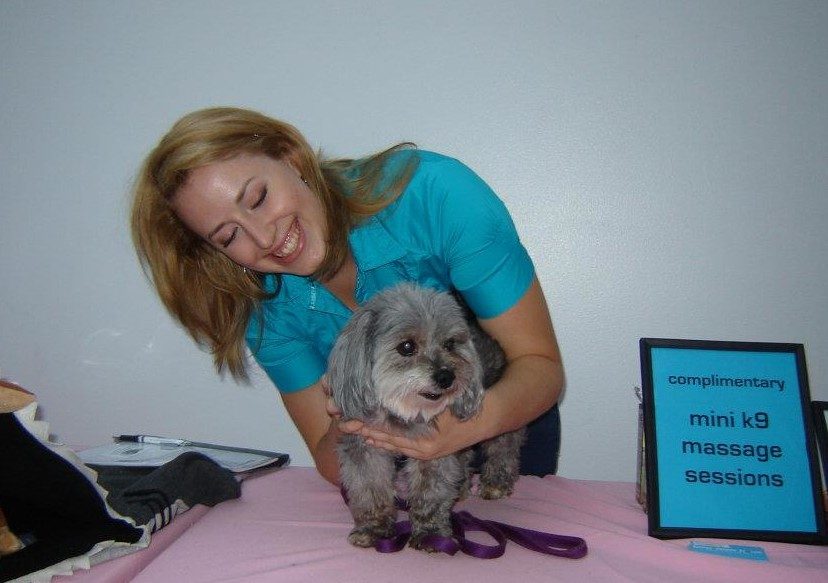How to give your dog a massage
Massage therapy is a growing practice in the pet world. Many people and their pets are experiencing the benefits of massage from the growing number of practitioners. We recently had a chat on Facebook about the benefits of massage and promised to post a “how-to” for dog massage. We asked certified canine massage therapist Hannah Bock, who was also a technician with us, to share some tips with us.
First, a little about canine massage therapy:
Sports Massage Therapy is the therapeutic application of hands-on, deep tissue techniques to the muscle system. Similar to massage therapy for humans, the muscles are first warmed up, then treated with direct pressure, and finally closed off with calming strokes. Massage therapy can aid in injury prevention, injury recovery, psychological issues, overall health and increased athletic ability in canines.
Canine Massage Therapy has the following benefits:
-Enhanced muscle tone and range of motion
-Reduced inflammation and swelling in the joints
-Promotes the healing process
-Releases Tension
-Stimulates circulation, releasing endorphins
-Helps to maintain the whole body in better physical condition
How to give your dog a massage
- Have your dog lie on their bed or a blanket on the ground and sit beside them. Couches and chairs aren’t a great idea because it’s difficult for the dog to stretch out.
- Start by stroking your dog from head to tail. Begin with light strokes like normal petting and slowly use more pressure. Keep your strokes long and slow. Avoid the face, start between the ears or from the neck. You can stroke down their legs as well, but use very light pressure.
- Next you will use a circular stroke. Start behind the ears and use your thumbs to rub small circles directly behind the ears. Slowly move down the neck, increasing your circle size. When you reach the shoulders, use your palms instead and continue using large circular strokes over the shoulders, back, and haunches. Pay attention to the signs your dog gives you. If they pull away or flinch, use less pressure in that area. Areas like the neck that carry a lot of tension and the haunches that have large muscles can often require a heavier pressure that your dog will love. Sometimes they may even lean into your hands, which is a sign you can use a slightly stronger pressure.
- You can use the circular strokes several times over the length of your dog’s body. For the second round, you can use smaller circles with your fingers for a more targeted approach. Try doing small circles down each side of your dog’s spine (be careful not to put any pressure on the actual spine). If your dog is fluffy, run your fingers down his back to find the spine before you start the massage so you know what area to avoid. You can also do small circles over the shoulders and haunches for a more thorough massage.
- Then use the same long slow strokes used at the beginning of the massage. Use firm pressure to start then soft pressure at the end.
- If your dog is lying on his side, have him stand up and lie down again on the opposite side. Repeat the steps again on the other side.
- If your dog likes having his ears touched, you can end the massage by stroking his ears back and gently pulling them up and away from his face. Dogs have many muscles in their ears, and a gentle pull can help release tension.
Massage is a great way to relax and connect with your dog, the benefits go both ways! If you notice your dog flinching or in obvious pain in a certain area, it might be a good idea to get him checked out by a vet. If it is a muscle issue, consider visiting a professional canine massage therapist who can perform a more thorough, targeted massage that can help heal injuries.
Feel free to comment with any questions you may have!
Good luck!
Hannah
Hannah is a certified canine and equine massage therapist who recently moved away from beautiful Vancouver to pursue a career in marketing in Ontario. She lives with her Nova Scotia Duck Tolling Retriever rescue, Sadie, who has sparkly white teeth and can be seen in many other K9 Gentle Dental blogs as she is an excellent model for photo shoots.





